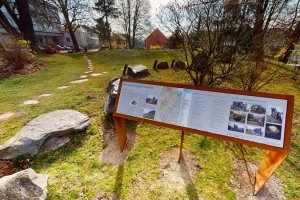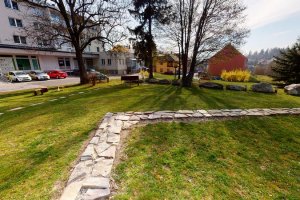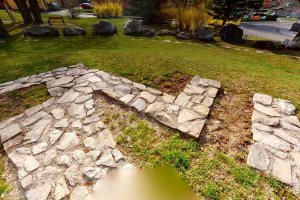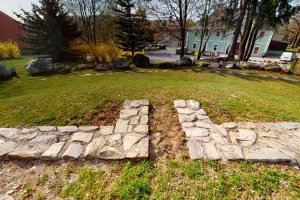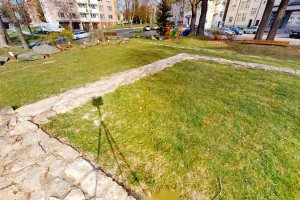Protected archaeological site Hrádek – Burgstadel
The Hrádek site, which is located not far from Náměstí Míru in Rýmařov, is used as an external part of the geological exposition of the Rýmařov Town Museum and the exposition presenting the history of this place.
The site of the discovery of Roman coins of Emperor Domitian from the 1st century AD proves the presence of the Germans.
In the pre-colonization period (before 1250), a fortified centre of the forest district, an administrative unit of the Přemysl state, was established here, which at the same time controlled the settlement of the area. German colonists later founded the city under its protection (1278 at the latest). In the same period, the royal fortress was modernised into a town castle, and at the end of the 13th century it was included in the fortification of the entire Rýmařov. At the turn of the 13th and 14th centuries gold was smelted here from the surrounding mines.
At the end of the 14th century, the hill was raised with an embankment of soil and waste material from the nearby ironworks, and a fortified residence made of wood and clay was built on top of it on a different principle. In the summer of 1405, after the end of the Moravian margrave wars, it was conquered and the adjacent part of the city burned down and was never rebuilt. After the meat shops in the second half of the 15th century, a potter resided here and produced exclusive white ceramics until the 17th century.
An extensive set of artefacts from archaeological research, which was carried out in 1969–1973 and in 1976–1988 by PhDr. Vladimír Goš, CSc., Ing. Jaromír Novák and Mgr. Jiří Karel, is in the collections and in the long-term exhibition of the Rýmařov Town Museum.
A replica of the foundations of the residential building of the castle with an attached heating device demonstrates the situation at the end of the 13th century. Gold was smelted in the eastern part of the site next to the building.
 English (United Kingdom)
English (United Kingdom)  Polski (PL)
Polski (PL)  Czech (Čeština)
Czech (Čeština) 